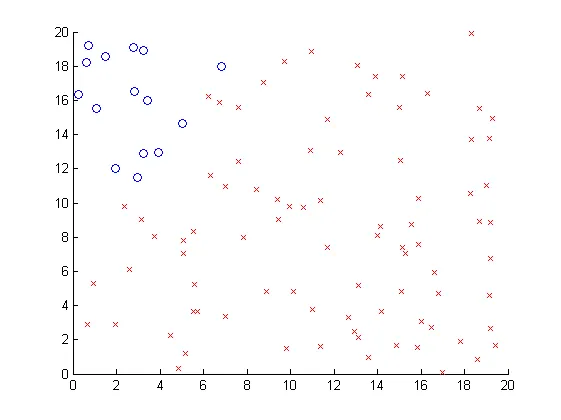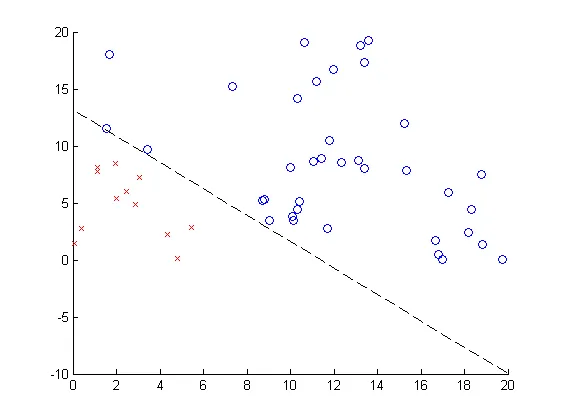我正在生成可线性分离的随机数据。我想编写自己的感知器版本来进行分离。我知道有些帖子存在类似的问题,但我找不到我的错误。我真的被卡住了。算法运行了,但似乎无法收敛。如果你能帮助我,我将不胜感激。
我的代码:
single_layer_perceptron.m
非常感谢您!
我的代码:
single_layer_perceptron.m
% INPUT
% amount of values
points = 20;
% stepsize
s = 1.0;
% INITIALIZE
% Booleans
TRUE = 1;
FALSE = 0;
% generate data
D = generateRandomData(points);
% x-values
x = D(:,1);
% y-values
y = D(:,2);
% training set
d = D(:,3);
% weights
w = zeros(3,1);
% bias
b = 1;
% sucsess flag
isCorrect = FALSE;
% correctly predicted values counter
p = 0;
% COMPUTE
% while at east one point is not correctly classified
while isCorrect == FALSE
% for every point in the dataset
for i=1 : points
% calculate outcome with current weight
c = heaviside(b * w(1) + x(i) * w(2) + y(i) * w(3));
% compare output with training set
a = errorFunction(c,d(i));
% if outcome was wrong
if a ~= 0
% ajust weights
w(1) = w(1) + a*s*b;
w(2) = w(2) + a*s*x(i);
w(3) = w(3) + a*s*y(i);
else
% increase correctness counter
p = p + 1;
end
end
%disp(w);
disp(p);
if p >= points
isCorrect = TRUE;
end
p = 0;
end
generateRandomData.m
function f = generateRandomData(points)
% generates random data that can be lineary seperated (silent)
% generate random function y = mx + n
m = 2 * rand * sign(randn); % in (-2,2)/0
n = 10 * rand + 5; % in (5,15)
% generate random points
x = 20 * rand(points,2); % in ((0,20), (0,20))
% labeling
f = [x, zeros(points,1)];
for i=1:length(x(:,1))
y = m*x(i,1) + n;
if x(i,2) > y
f(i,3) = 1;
end
end
end
activationFunctionHeaviside.m
function f = activationFunctionHeaviside(x)
f = (1/2)*(sign(x)+1);
end
errorFunction.m
function f = errorFunction(c,d)
% w has been classified as c - w should be d
if c < d
% reaction too small
f = -1;
elseif c > d
% reaction too large
f = 1;
else
% reaction correct
f = 0;
end
end
非常感谢您!

